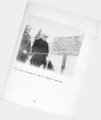| OCR Text |
Show which the hillside steepens again but remains below the critical angle. This terrace catches the annual slides. The climax avalanches overshoot it and issue on to the parking area from a large gully. The exposure favors the formation of slab and cornices from northerly winds. The slide path is approximately ^ mile wide and a mile long. Weather data: The Emma avalanche has not run during the period for .which comprehensive records are available, However, there are some interesting and significant hints. The 1884 slide was touched off by I.71 inches of rain. A March rainstorm would have the Alta administrator "battening down the hatches" on general principles alone. Abnormal weather in an avalanche area is almost always dangerous. But he would have excellent reasons for his action. In terms of snowfall, that much rain would amount to 15 inches of damp snow containing .12 of an inch of water per inch of snow, or 21 inches of dry snow of .08 of an inch average water content, or 35 inches of light snow with .05 of an inch water content. These are all critical amounts of snow. Wind force and direction would play a less important part in a rain storm, but this would be made up for, by the lubricating and loosening effect of water percolating into the snow pack. The 1939 slide was winterrs greeting to the first Alta administrator. Detailed weather data are not available, but Hanger Wadsworth's reports yield some valuable information. It had been a winter of abnormal snowfall with numerous storms from the north and northwest. Such conditions would promote tho formation of cornices and slab on the Emma slide path. The avalanche ran during a violent northwest storm. It destroyed some mine buildings which had been undisturbed for 50 years, and sheared off the top of the public ski shelter, then under construction. As a result the plans for the shelter were altered in favor of an avalanche-proof roof at parking area level instead of a third story projecting above the highway. This is proof positive of the necessity for considering climax avalanches in alpine ski area planning. Major slides were general along the north side of Little Cottonwood on this occasion. Eighteen different avalanches reached the highway and it was buried for a total of 3»000 yards throughout its 9~mile length. Most of the parking area was also buried* The 19^1 slide was less violent than 1939*s. Again the parking area suffered. There was damage to several cars standing in the unprotected portion and to a tow installation. Oddly enough, the Emma slide proper did not run, at least not in major volume. This fact is calculated to keep any snow observer from becoming too "cocksure," Eight inches of damp new snow are mentioned in the report on this slide, a hazardous situation but not hazardous enough in itself to produce a cycle of such violence. Again appears the background of abnormal snowfall with a concentration of northerly storms. The damp new snow was the detonator, not the maiij charge. -91- |








































































































